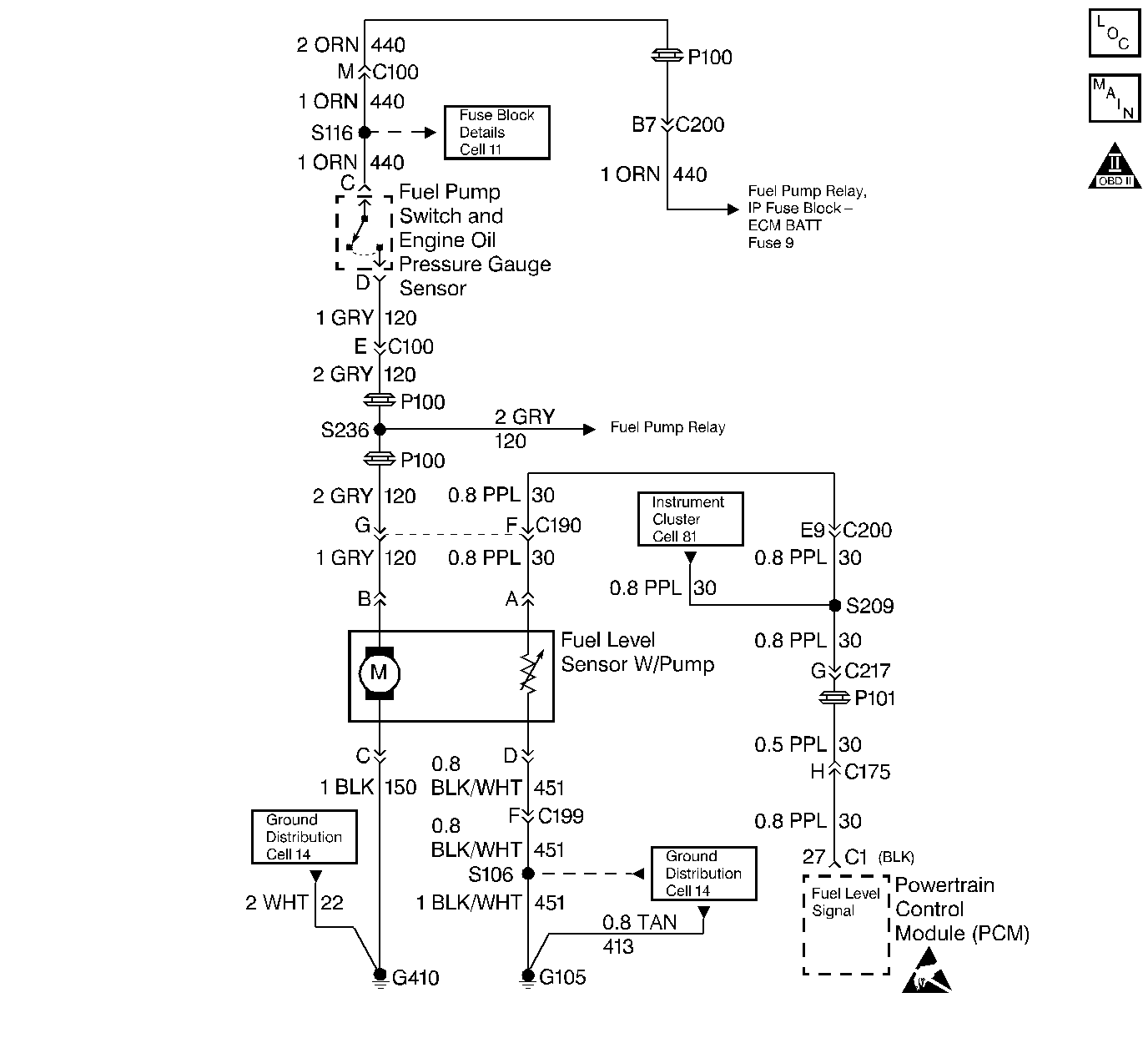
Circuit Description
The powertrain control module (PCM) uses the fuel level input in order to calculate the expected vapor pressures within the fuel system. These vapor pressures vary as the fuel level changes. The vapor pressure is critical in determining if the Evaporative Emissions system is operating properly. The PCM also uses the fuel level in order to determine if the fuel level is too high or too low to be able to accurately detect EVAP system malfunction.
Conditions for Setting the DTC
The fuel level has not changed more than 1.6% (4 counts) in 120 miles.
Action Taken When the DTC Sets
| • | The PCM records the operating conditions at the time the diagnostic fails. The Failure Records buffers will store this information. |
| • | A History DTC is stored. |
| • | The fuel tank level defaults to 40 percent. |
Conditions for Clearing the DTC
| • | A History DTC clears after 40 consecutive warm up cycles without a fault. |
| • | Use a scan tool to clear the DTCs. |
Diagnostic Aids
Whenever a DTC P0460 is set along with an EVAP System DTC, the EVAP DTC can not be considered valid until DTC P0460 is repaired and cleared.
Test Description
The numbers below refer to the step numbers on the diagnostic table.
-
The Powertrain OBD System Check prompts the technician to complete some basic checks and store the Freeze Frame Data and the Failure Records on the scan tool if applicable. This creates an electronic copy of the data taken when the fault occurs. Refer to this information on the scan tool later.
-
The fuel level sensor is diagnosed in Section 8C-1 of the service manual.
-
Repair verification is an important step in any diagnostic procedure. Comparing the fuel level readings before and after the repairs is a good way to determine if a repair has been successful.
Step | Action | Value(s) | Yes | No |
|---|---|---|---|---|
Was the Powertrain On-Board Diagnostic (OBD) System Check performed? | -- | |||
Refer to Section 8C-1. Is the action complete? | -- | -- | ||
3 | Verify repairs by viewing the scan tool fuel level data. Does the fuel level data reflect the correct amount of fuel in the tank? | -- | ||
Does the scan tool indicate that this diagnostic ran and passed? | 90°-95° C | |||
5 | Check if any additional DTCs are set. Are any DTCs displayed that have not been diagnosed? | -- | Go to the Applicable DTC Table | System OK |
